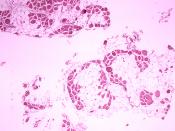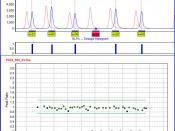I chose this genetic disorder to study because when I read that Duchenne Muscular Dystrophy is diagnosed in young children, my heart went out to those affected by it. This sounded like an interesting subject and this project gave me chance to learn more about the genetic disorder. The scientific name of this genetic disease is Duchenne Muscular Dystrophy, otherwise referred to as Duchenne MD or DMD.
DMD is caused by a recessive allele on the X-chromosome, and is therefore sex-linked. As a result, it occurs in males more frequently then in females. Though there are rare exceptions when female carriers can experience mild symptoms. DMD is the most common lethal genetic disease in young children of all ethic backgrounds and ancestries. Children first start showing DMD symptoms around ages 3 to 6 years. About 1 in 3,500 males worldwide is diagnosed with DMD.
Children with DMD are diagnosed around ages 3 to 6, in a wheelchair by 11, and rarely live past their late teens or early twenties.
Symptoms include weakness, delay in walking, waddling walk, difficult in climbing stairs, and seemingly large and developed calf muscles. An early symptom that parents may notice can be referred to as a "waddling" way of walking. As a child with DMD grows and his muscle cells deteriorate, he becomes noticeably weak. A child with DMD often develops Lordosis, or an exaggerated in the forward curve of the lower back, where the belly is thrown forward to balance against weak pelvic muscles. Scoliosis is also an unfortunate occurrence among DMD patients. A child with DMD usually loses his ability to walk between 9 and 14 years old after muscles have weakened and cords in the heel become tight and rigid. Thereafter the use of the arm muscles is increased and as...


